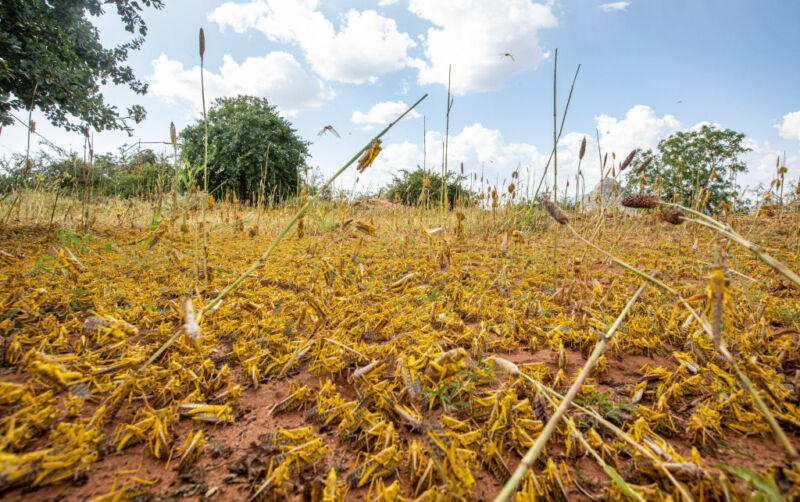Second African locust swarm of the year 20 times bigger than the first

Enlarge / NAIROBI, Feb. 21, 2020-A swarm of desert locusts invade parts of Mwingi Town in Kitui County, Kenya, Feb. 20, 2020. (credit: Xinhua News Agency | Getty Images)
As the coronavirus pandemic exploded across the world earlier this year, another even more conspicuous plague was tearing through East Africa: locusts. The voracious little beasts are particularly fond of carbohydrates like grains, a staple of subsistence farmers across the continent. Back in January, the UN Food and Agriculture Organization (FAO) predicted the worst was still to come, and that by June, the size of the swarms could grow by a factor of 500.
And now, at the worst time, a second wave of locusts 20 times bigger than the first has descended on the region, thanks to heavy rains late last month, according to the FAO. The swarms have infiltrated Yemen and firmly established themselves across the Persian Gulf, having laid eggs along 560 miles of Iran's coastline. New swarms are particularly severe in Kenya, Ethiopia, and Somalia.
"The timing is really horrendous, because the farmers are just planting, and the seedlings are just coming up now since it's the beginning of the rainy season," says Keith Cressman, senior locust forecasting officer with the FAO. "And it's right at the same time when you have an increasing number of swarms in Kenya and in Ethiopia. There's already pictures and reports of the seedlings getting hammered by the swarms. So basically that's it for the farmers' crops."
Read 14 remaining paragraphs | Comments